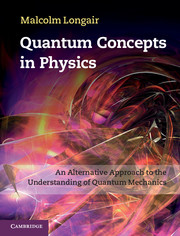Book contents
- Frontmatter
- Contents
- Preface
- Acknowledgements
- Part I The Discovery of Quanta
- Part II The Old Quantum Theory
- 4 The Bohr model of the hydrogen atom
- 5 Sommerfeld and Ehrenfest – generalising the Bohr model
- 6 Einstein coefficients, Bohr's correspondence principle and the first selection rules
- 7 Understanding atomic spectra – additional quantum numbers
- 8 Bohr's model of the periodic table and the origin of spin
- 9 The wave–particle duality
- Part III The Discovery of Quantum Mechanics
- Epilogue
- Notes
- References
- Name index
- Subject index
8 - Bohr's model of the periodic table and the origin of spin
from Part II - The Old Quantum Theory
Published online by Cambridge University Press: 05 February 2013
- Frontmatter
- Contents
- Preface
- Acknowledgements
- Part I The Discovery of Quanta
- Part II The Old Quantum Theory
- 4 The Bohr model of the hydrogen atom
- 5 Sommerfeld and Ehrenfest – generalising the Bohr model
- 6 Einstein coefficients, Bohr's correspondence principle and the first selection rules
- 7 Understanding atomic spectra – additional quantum numbers
- 8 Bohr's model of the periodic table and the origin of spin
- 9 The wave–particle duality
- Part III The Discovery of Quantum Mechanics
- Epilogue
- Notes
- References
- Name index
- Subject index
Summary
Bohr's first model of the periodic table
We now need to retrace our steps and follow Bohr's activities from his great Trilogy of 1913 to his model for the periodic table of 1922. In 1914, Bohr petitioned the Danish government to create a professorship for him in theoretical physics and this was granted two years later. In the meantime, he returned to Manchester as Schuster Reader in physics before taking up his appointment as Professor of Theoretical Physics in Copenhagen in 1916. In 1917, Bohr successfully petitioned the physics faculty of Copenhagen University to found an Institute for Theoretical Physics with Bohr as its founding director. The Institute was officially opened in 1921, but the strain of setting up the new institute combined with his continuing, almost obsessive, research programme into the fundamentals of quantum theory, took a heavy toll and in 1921 he suffered a serious bout of ill-health. Despite this, he remained the driving force behind the attack on the problems of quantum theory on a very broad front. Thanks to his tireless efforts and inspiration, Copenhagen became one of the two major centres for the development of quantum theory, the other being in Göttingen, through the 1920s when the foundations of the old theory were to be cut away and replaced by completely new concepts. The Institute for Theoretical Physics, commonly referred to as the ‘Bohr Institute’, became formally the Niels Bohr Institute in 1965, three years after his death.
- Type
- Chapter
- Information
- Quantum Concepts in PhysicsAn Alternative Approach to the Understanding of Quantum Mechanics, pp. 155 - 171Publisher: Cambridge University PressPrint publication year: 2013



